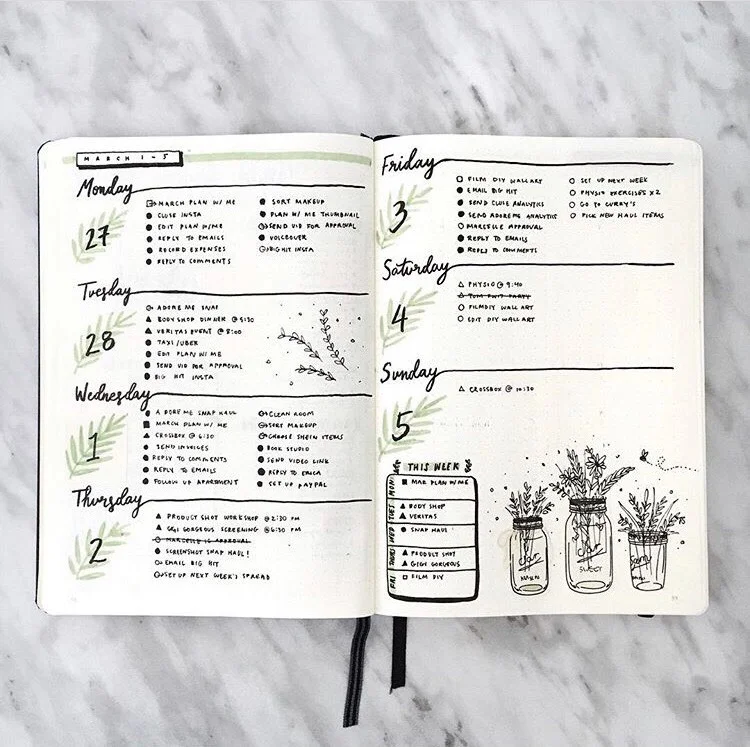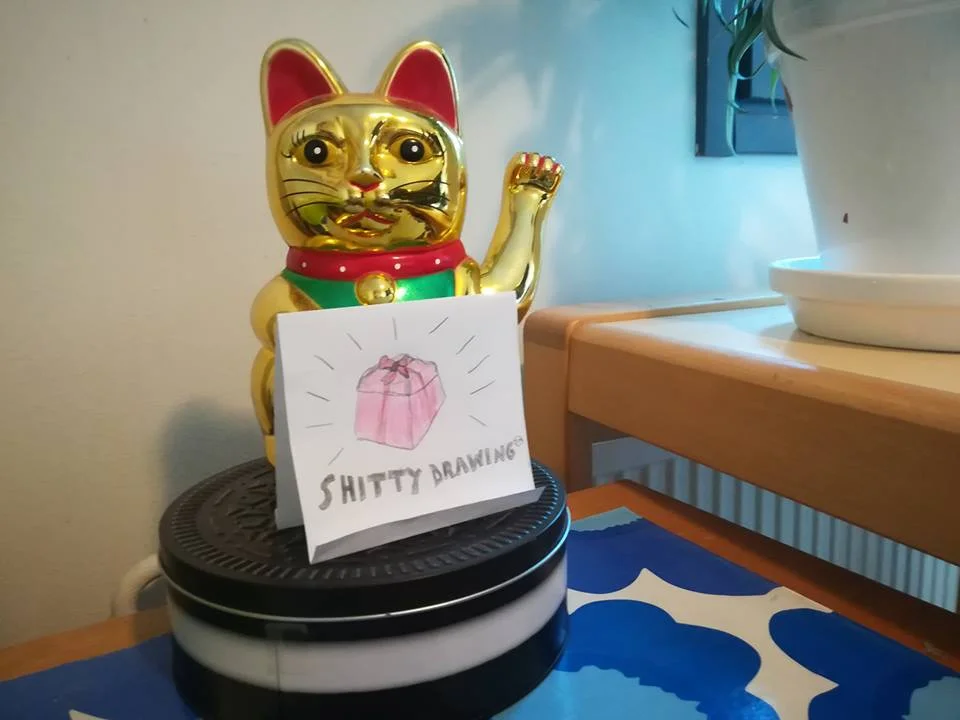An Introduction to Bullet Journaling – The Art of Intentional Living
Have you ever heard the term bullet journal?
Up until the spring of this year I hadn’t. Or, I had, but I hadn’t paid any attention to it, hadn’t registered it into my consciousness.
Then one day I happened upon an Instagram post by my friend. She was asking something about her followers’ bujo habits, I guess.
What on earth is bujo, I asked her in the comments. She explained shortly.
I googled.
And here I am in my eighth month of bullet journaling, delighted with the whole thing.
Future log by @electriclil (Instagram)
What Is A Bullet Journal?
A bullet journal, also called bujo, could be said to be something between a notebook, a calendar and a diary, created from scratch by its user. The bullet journal system was created by a New York digital product designer and author, Ryder Carroll, after years of trying to find a best method to be focused, productive and motivated. The official bullet journal website (bulletjournal.com) characterizes bullet journaling as a mindfulness practice disguised as a productivity system and the method being about the art of intentional living.
The most used notebook for bullet journaling is the Leuchtturm 1917 (advocated by the official website), but there are countless other bullet journal notebooks on the market these days, such as the Scribbles That Matter or the Nuuna. The difference between a notebook used for bullet journaling and a regular notebook are the faint dots on the pages – instead of lines or blank pages – which makes setting up the journal easier.
Monthly log with a fruit theme by @journalbydesign (Instagram)
The bullet journal system is based on what Carroll calles “rapid logging”, writing things down in bullets. The bullets are divided into categories, such as a dash for a basic note, a dot for a task, a circle for an event or meeting, et cetera. These are covered with specific marks, such as a cross or arrows, depending whether they are completed, migrated for later, deemed irrelevant, and so on. The method allows the user to effectively keep their everyday in order. One of the useful functions of the system is that when you write down the things in your head – whether it be an appointment or just something interesting you thought about – they don’t circle around there aimlessly, and you can relax.
The basic layout of a bullet journal includes a future log, in which all the months of the year are arranged into a spread, and the most important things in each month are written down. After the future log comes the monthly log, in which the month is laid out on the spread, and after each month comes the weekly or daily logs (or both, if preferred), which allow the most room for detailed notes. Even before setting up their future log, a bullet journalist usually sets up an index and a key, which specifies the kinds of bullets and marks used for indicating the type of a note and its status.
Weekly log with a plant theme by @amandarachlee (Instagram)
Ever since bullet journaling started becoming popular, the community around it has blossomed and so have the ways of doing a bujo. Many bujo enthusiasts have become more and more elaborate in the decorations and themes they come up with. For example, a popular thing to do is to have a theme for each month with doodles, drawings, pictures and washi tapes according to the theme sprawled across the pages of that month. Many bullet journalists look for inspiration from Youtube, Instagram and Pinterest, platforms that have numerous accounts specifically dedicated to bullet journaling.
Along with the wide variety of decorations and themes used, the blossoming of the online community has also given way to new creative ways for using a bujo to add productivity and mindfulness to your life, such as monthly trackers (habits, mood, expenses, etc…), to do lists (admittedly not a very new idea, but it fits bullet journaling), brain dump pages, goals pages, gratitude pages, and so forth. Many also take the season into account, for example adding Christmas gift idea pages to their December setup.
An introspective goals, interests and talents spread in minimalist style by @sloliv (Instagram)
As evidenced, there are countless ways to enhance your bujo, and the list just keeps on growing. And that is the beauty of bullet journaling; you are able to make it what you want and fit it into your own life the best way possible. No one is forced to strictly adhere to the system created by Carroll, no one is forced to decorate their bujo if they don’t want to, everyone can do it the way they best see fit. I can definitely recommend starting a bullet journal and seeing how it enhances your life!
An introspective monthly review by @isabelleplans (Instagram)
Cover photo by @amandarachlee.










